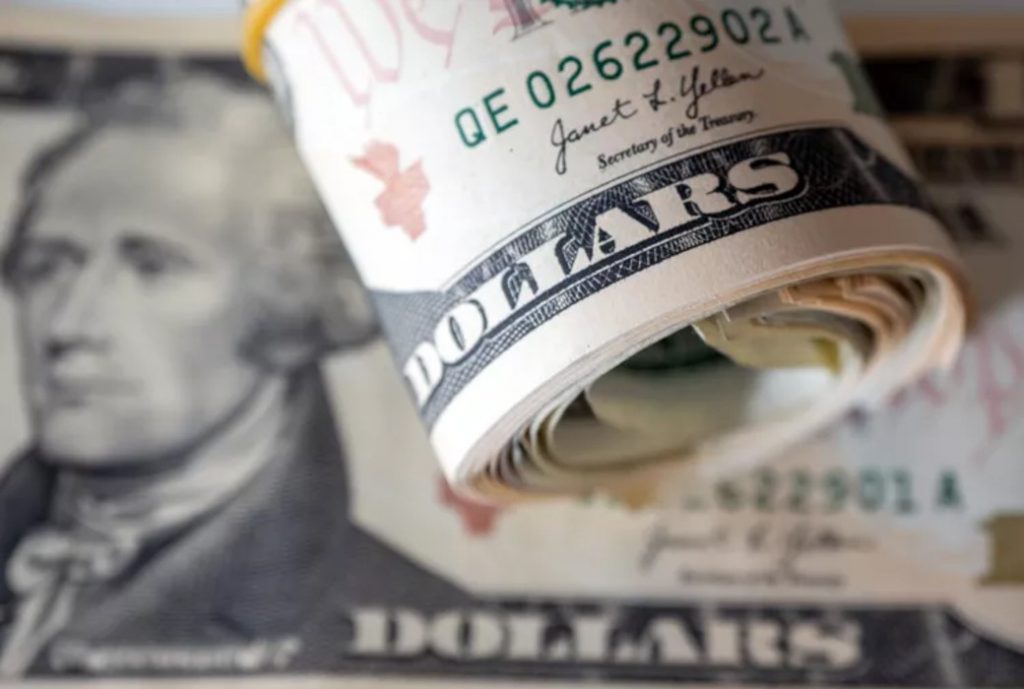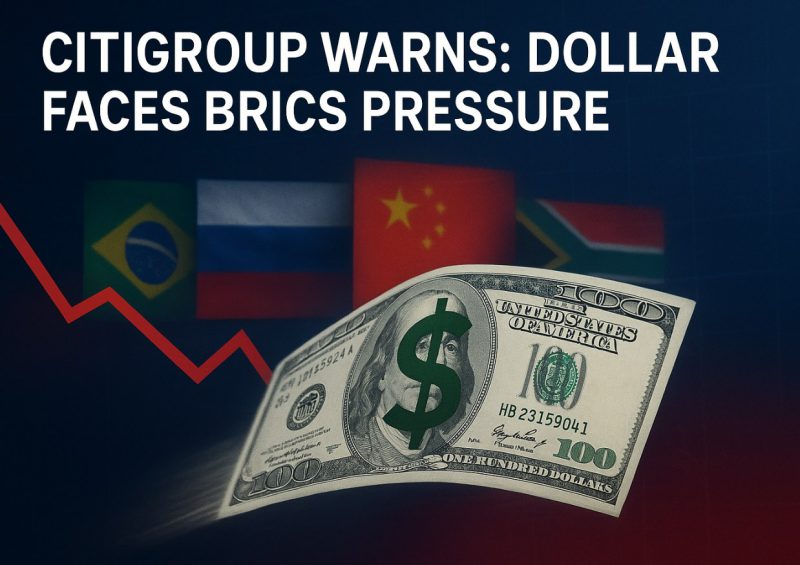Citigroup’s US dollar outlook has been signaling some pretty serious concerns for the greenback heading into late 2025 and through 2026, and it’s worth paying attention to what they’re saying right now. The bank’s economists are warning that global growth is expected to slow down to around 2.4% this year before bouncing back slightly to 2.5% in 2026, and a big part of the pressure is coming from expanding BRICS US dollar trade systems and persistent tariff uncertainties that are creating real headwinds for the currency.
Also Read: BRICS Spurs Central Banks Record Gold Buying: They Know Dollar Will Collapse
Citigroup US Dollar End of 2025 Signals BRICS Trade and Decline Risks


Economic Weakness Shapes the Citigroup US Dollar Outlook
Some fundamental economic shifts happening right now shape Citigroup‘s US dollar outlook. The bank’s mid-year report shows that businesses and consumers front-loading purchases ahead of tariffs created much of the resilience in early 2025, but exhaustion has set in.
Tariff front-loading created much of the recent resilience, but exhaustion has occurred at least in part, and businesses will have to pay back front-loaded purchases in coming quarters.
What’s also concerning is that tariffs are playing through into US prices, and more pressures in the pipeline will weigh on real incomes and spending. The US economy expanded final sales to private domestic purchasers at 2.5% in the first quarter, but these effects will work their way through the system and bring second-half weakness.
Citigroup’s US dollar end of 2025 forecast takes into account these weakening fundamentals alongside the fact that BRICS nations are actively building payment infrastructure that bypasses dollar transactions entirely. At the time of writing, these alternative systems are gaining real traction in international trade.
BRICS Payment Infrastructure Reduces Dollar Dependency
While there isn’t a unified BRICS currency yet, the bloc has been making steady progress on developing BRICS Pay and promoting local currency settlements between member nations. The timeline lays out the development in phases, with 2025-2026 focusing on expanding bilateral trade in national currencies, and 2026-2027 targeting the development and testing of the BRICS Pay digital payment platform.
The bloc is considering a digital settlement token for central bank and trade-level transactions for post-2027, which would further reduce the need for dollars in international commerce. This phased approach matters because it directly impacts BRICS US dollar trade volumes as transactions between China and Russia, or Brazil and India, can increasingly happen without touching the greenback at all.
Citigroup’s US dollar outlook has to factor in these structural changes because they represent a long-term shift in how global trade operates, not just a temporary disruption.
Dollar Weakness Expected Through 2026
Citigroup’s currency strategists aren’t being subtle about their views. The bank remains bearish on the US dollar and continues to favor the euro by not fully hedging European assets. Their asset allocation report stated:
The data flow keeps favoring the euro, and the rates differential favoring the dollar broke down as a driver.
Major institutional players are betting real money on Dollar weakness with this positioning. Higher US interest rates traditionally attracted capital and supported the greenback through rate differential, but this reliable driver of currency strength is breaking down right now.
Citigroup’s US dollar end of 2025 projections also incorporate expectations for Federal Reserve rate cuts, with the Fed planning 25-basis-point reductions at each subsequent meeting to reach a terminal rate of 3.0% to 3.25% by March 2026. However, material weakening in economic activity and labor markets must occur first before the Fed cuts rates, which creates a vulnerable period for the currency.
Tariff Policy Accelerates BRICS US Dollar Decline Scenario
The tariff issue is becoming increasingly complex and Citigroup anticipates that more tariffs will be charged in the quarter to come. The bank expects a 25 percent Section 232 US import tax on copper to be notified and taxed in the third quarter, and comparable tariffs of at minimum 25 percent on platinum, zinc, nickel, tin and uranium. These commercial barriers are generating divergent inflationary trends with the measures being disinflationary to Europe and inflationary to the United States.
This increases the appeal of BRICS US dollar substitutes to those nations that seek to avoid the costs that have been imposed by the US, and reinforces the BRICS US dollar downfall prognosis that the bank projects will happen by 2026. The confluence of deteriorating US economic fundamentals, growing BRICS payment infrastructure, and long-standing tariff uncertainty is setting up such structural headwinds on the dollar that is not just a normal cyclical event.
Also Read: US Dollar Just Received A Warning From Deutsche Bank
Citigroup’s US dollar forecast acknowledges that they are not short-term problems but changes that may transform how global finance operates in the further years, and the BRICS US dollar trade relationships are a significant component of that formula.





